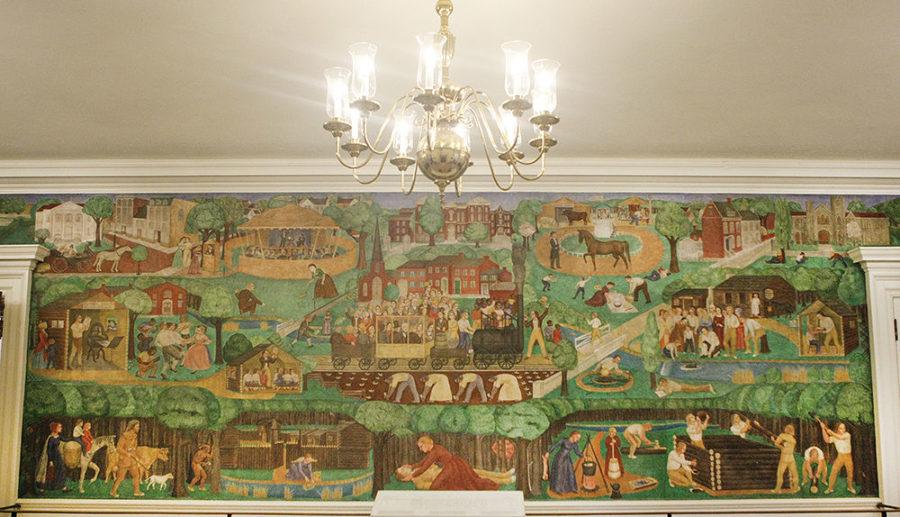Hopes for change reversed with uncovered mural
December 9, 2015
Students across campus are questioning President Eli Capilouto’s commitment to “building an even stronger, more diverse, more inclusive, more enlightened community.”
From an outsider’s perspective, it seems as if covering the mural was the only step the university has taken toward becoming a more inclusive environment. However, since the mural will no longer be covered, it is like no progress has been made.
After meeting with a group of African-American students Nov. 12, Capilouto sent out an email that included the top five problems the students believed the university needed to address and solve. “We must pursue these aims with an abundance of communication, transparency of effort, and commonness of purpose,” he said in the email.
Capilouto announced the decision Nov. 23 to address complaints from students and temporarily cover the fresco in Memorial Hall until the university could ultimately determine the mural’s fate.
The fresco has made some students uncomfortable because of its portrayal of black people working in a tobacco field and playing music for white people, and a Native-American carrying a tomahawk. Capilouto said the mural is “certainly not the only – nor the most important – issue raised.”
A group of more than 100 faculty, staff and graduate students sent an open letter to Capilouto on Dec. 4 in response to his decision to cover the mural. They wrote, “We are in agreement that covering up a decades old mural is not enough to improve problems of inclusion. The university could and should do more to improve the conditions on campus for all people of color.”
Rather than leaving the conversation open to all underrepresented students on campus, Capilouto only met with a small number of black and African-American students. The group said in the letter that having these meetings behind closed doors “betrays the role of the university as a place for open dialogue and education.”
The letter applauds Capilouto’s decision to cover the mural but pushes for more change.
On Dec. 7, Capilouto sent another email saying, “We will not destroy or remove or permanently hide the mural, but we will make the story told in the atrium of Memorial Hall more complete.”
Covering the mural was a start, but uncovering it and saying there will be no permanent cover puts students back in the same position of uncertainty about their place on campus as they were before.
To students and outsiders, it seems as if the administration is making no effort to fix the problems surrounding this campus — especially since the one public show of support for minority students will be taken away.
Savon Gray is a journalism sophomore.
Email opinions@kykernel.com
































































































































































